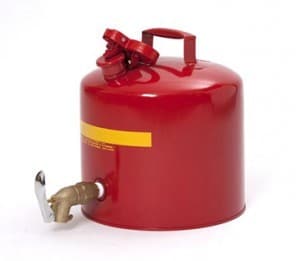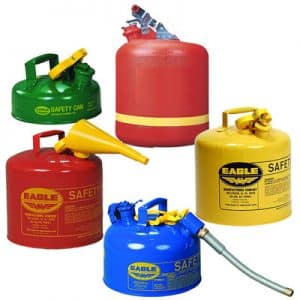Safety is essential when it comes to chemical containment in your workplace
 Fuels and chemicals are common and necessary tools in factories, shops, labs, warehouses, and construction sites. While some of these substances — such as gasoline, kerosene, diesel, and other combustible oils — are familiar and seemingly harmless materials to handle, safety is essential when dealing with any kind of fuel or chemical, especially in the workplace.
Fuels and chemicals are common and necessary tools in factories, shops, labs, warehouses, and construction sites. While some of these substances — such as gasoline, kerosene, diesel, and other combustible oils — are familiar and seemingly harmless materials to handle, safety is essential when dealing with any kind of fuel or chemical, especially in the workplace.
You can help keep your workers and business safe by using the following three-step approach for hazardous chemical spill containment.
1. Train your employees
Giving your employees the proper training for handling hazardous materials can greatly reduce the risk of injury caused by these substances. Training is also important to ensure compliance with Occupational Safety and Health Administration (OSHA) guidelines.
Employees must also understand which tools to use with the specific material they’re handling. Including wearing the appropriate level of personal protective equipment (PPE) when dealing with a chemical containment or spill issue.
2. Choose the right container
Your choice of safety container material depends on the type of chemical you need to store inside it:
- Galvanized steel — Use when chemical purity is not essential. Some chemicals may adversely affect paint.
- Polyethylene — Use to store acids, caustics, or other corrosive substances.
- Stainless steel — Use when chemical purity is necessary.
The size of container you’ll need depends on how frequently the chemical is used, its applications, and where it is being used. Smaller-sized containers are recommended for a workstation, whereas larger, five-gallon containers are ideal in a field or warehouse.
3. Keep containers organized
Mixing up fuels or chemicals or accidently using the wrong substances can have catastrophic consequences. Many businesses use a container color-coding system to avoid chemical mix-ups.
In general, flammable liquids are organized and stored according to the following scheme:

Safety cans for chemical containment come in different colors, materials and sizes to safely store and dispense contents
- Gasoline is stored in red containers.
- Diesel is stored in yellow containers.
- Kerosene is stored in blue containers.
- Oil combustibles are stored in green containers.
Most business will need to use several different types and sizes of containers to safely handle and store flammables and combustibles.
AbsorbentsOnline.com offers top-quality Eagle Safety Cans to help meet your safety compliance needs. Many of the hazardous chemical spill containment products available meet OSHA standards or NFPA Code 30 requirements, are UI and ULC listed, or are FM Approved.
By employing these three practices and using safety cans or other containers approved for chemical storage, you’ll keep your employees and worksite safer, neater, and legally compliant.
AbsorbentsOnline is here to help. Feel free to contact us by email or call toll free at (800) 869-9633.